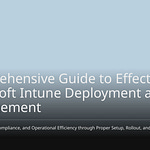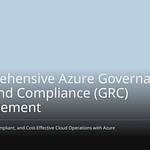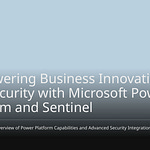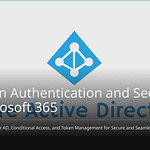Is it hard for your team to grasp tough compliance policies? Many groups face this problem. Good talking is key. It makes sure everyone follows compliance rules. It also lowers dangers. It’s not just about making rules. It’s about truly knowing why compliance is important. Good compliance management needs clear talking. This helps improve all compliance. This post gives easy ways to explain compliance policies better. We want things to be clear. We want people to get involved. We want to show how to use your policies and procedures. Better compliance management means your policies and procedures are simpler to follow. This makes your whole compliance stronger.
Key Takeaways
Know your audience and choose the best way to share information.
Use simple words and avoid hard legal terms when you explain rules.
Tell people why rules are important and how they help everyone.
Give clear steps for people to follow the rules easily.
Use pictures, videos, and fun activities to help people learn and remember.
Tailor Communication for Compliance
Make your compliance messages stick. Know who you are talking to. Do not use one-size-fits-all. Think about your team. What do they know? What challenges do they face?
Understand Your Audience
Think about groups in your company. Do you have technical staff? What about non-technical employees? Each group has different needs. Tailor training programs. Show how rules apply to work. This makes compliance real. Customize messages. Boost engagement. This leads to better adherence. This applies to your compliance policies and procedures. Personalized education helps people learn. This works for compliance too. Make your compliance management effective. Understand your audience.
Connect with people. Make your compliance team easy to reach. Encourage questions. Use real examples. This makes compliance relevant. Embed compliance into everything. Think about new employee orientation. Include compliance there. Create ways for feedback. Find gaps. Improve your approach. Build partnerships with HR and legal. This helps. It ensures compliance is part of work.
Choose the Right Format
Know your audience. Pick the best way to share. Some learn by reading. Others prefer visuals. For non-technical employees, simple language is key. Avoid jargon. Explain technical terms right away. Aim for easy reading. Think 7th or 9th grade.
Tip: Use analogies. Explain complex ideas. Connect new information to known things.
Visuals are powerful. Use charts and diagrams. Use infographics. Break down complex compliance information. Short videos can show steps. Flowcharts can show steps. Make your policies and procedures easy to navigate. Use clear headings. Use short paragraphs. Bullet points are great for lists. A user-focused policy considers the end-user. This improves overall compliance management. Give specific examples. Show “do’s” and “don’ts.” Clarify abstract rules. This makes your compliance efforts stronger.
Make Words Simple. Explain Rules.
Stop Using Hard Words
Compliance papers often have hard words. These words confuse your workers. They see it as a puzzle. Not helpful advice. Too many technical words push workers away. They want to learn. But the words make it hard. This makes them not care. They dislike compliance training. Change hard legal words. Make them clear rules. Everyone can then get it. They can follow the rules. Easy writing is key. It tells workers what to do. It sets what to expect. Hard words cause confusion. They cause people to not follow rules. This hurts the rule’s goal. You build trust. This happens when you speak clearly. This makes business better. It helps your compliance.
Tip: Good compliance talk means being understood. Not showing how smart you are.
How to Tell About Compliance Policies
To tell about compliance policies well, use plain talk. Change legal words. Change technical words. Do not use short forms. Unless you say what they mean. Use short sentences. Use short paragraphs. This makes your policies and procedures easy to read. Talk about key things. Give clear examples. Examples help workers. They see how a rule fits real life. They make hard rules easy. For example, show “Do’s.” Show “Don’ts.” This is for a rule. This makes good actions clear. Break info into small parts. This makes it easier to read. It helps workers remember facts. This makes compliance better. Make words simple. Do not use hard words. Say what words mean. This makes rules for everyone. All workers can get it. This helps compliance. It makes people care more. It also helps your compliance management. You make sure everyone gets it. This is about legal rules. It is for all teams. This makes your whole compliance stronger.
Focus on the “Why” and Actionable Policies and Procedures
Emphasize Purpose and Benefits
You may ask why rules exist. Why follow this process? It protects important things. It protects data. It stops security problems. Knowing “why” helps you. You feel more driven. You can be flexible. You meet requirements. This gives you control. Managers should tell you why things change. Maybe it makes work safer. Or it meets standards. This helps you understand. Open talks help you support changes. We want your ideas. This builds teamwork. It builds shared goals. It increases your buy-in.
You need to know how rules affect your job. Why are they for you? We can use special training. We will tell you dangers of not following rules. We will be open about issues. This makes you want to act. Hearing from others helps too. It makes a connection. You might not like strict rules. But clear talks help. They show benefits and reasons. This makes you less resistant. When rules state their purpose, compliance is better. Good management means we explain rules. We tell you why a rule is needed. This helps everyone. It leads to better following of rules. We want you to follow these rules. They protect you. They protect the company.
Provide Clear Steps
Knowing “why” is good. You also need to know “how.” We give you clear steps. This helps you follow rules easily. Clear talks about rules are key. They help you know what we expect. They help you avoid mistakes. We use pictures. We use charts. We use summaries. These make hard processes clear. We also make sure you find rules easily. Digital or printed, easy access helps. You can check them if unsure. This stops you from forgetting steps.
We cover all work. This includes daily tasks. It includes emergency plans. This leaves no confusion. Checklists are helpful. They make processes the same. They help track following rules. They are a good guide for you. Our rules are clear. They are short. We avoid legal words. This makes sure everyone understands. We update rules often. This keeps them current. We store all rules in one place. This could be online. Or in a handbook. This makes them easy to find. When you have clear steps, you make fewer errors. This helps us see how well rules work. We track violations. We look at money saved. We check how many finish training. Clear steps mean better following. This makes our compliance stronger.
Engage Users and Ensure Understanding
Use Visuals and Interactive Formats
Your team should grasp compliance rules. Make learning fun. Visuals are strong tools. Infographics turn data into stories. They are easy to understand. Flowcharts show steps clearly. They map out processes. Short videos work well too. They keep you engaged. You remember more than reading. Videos show real life. This makes compliance real.
Interactive ways boost learning. Use Virtual Reality (VR). Use Augmented Reality (AR). This is for hands-on training. Gamification uses leaderboards. Or it uses badges. This makes learning fun. It motivates you. E-learning has quizzes. It has scenarios. This makes you take part. You remember more. Simulations let you practice. It is a safe space. This builds your confidence. You apply compliance at work. These ways make learning active. It is not passive.
Offer Support and Reinforce Learning
You need info easily. You need ongoing help. Make a central knowledge base. Or use an FAQ. This helps you find answers fast. It saves search time. This boosts your work. It improves compliance management. Your compliance documentation must be ready. You should know who to ask. Provide clear contacts for help.
Regular reminders are key. Updates are important. They keep you on track. This is for compliance policies and procedures. These can be short messages. Or quick updates. Do short, fun training. These break down topics. They are easier to learn. Use quizzes or scenarios. Check your understanding. Quizzes test memory. We want you to get the “why.” Give us your thoughts. This helps us talk better. We want our compliance to work for you.
You now know how to explain rules well. It is more than just making rules easy. You build a culture. Everyone understands. They follow rules on their own. Think about your audience. Use simple words. Say why rules are important. Use fun ways to teach. Give clear steps for all rules. Always offer help. You change rules from a problem. It becomes part of daily work. This keeps your company safe. It keeps your workers safe. Good rule management makes all your rule efforts stronger. You make sure everyone follows all rules.
FAQ
How often should you review compliance policies?
Look at policies often. Your company will tell you. This is for updates. Stay aware. Protect yourself. Protect the company.
What if you do not understand a policy?
Do not worry. It is okay to be confused. Ask questions. Talk to your manager. Or talk to the compliance team. They will help you.
Can you suggest improvements to a policy?
Yes, your ideas are good. See a way to make a policy clearer? Tell your manager. Your thoughts help everyone.
Why are compliance policies important for your job?
Policies keep you safe. They keep your data safe. They make things fair. Following them helps you. You do your job well. You do it safely.









